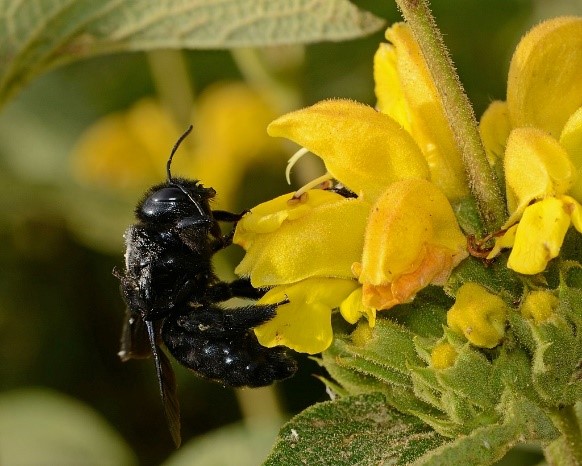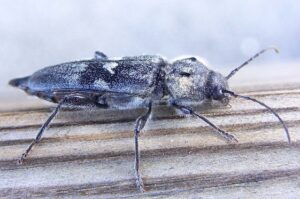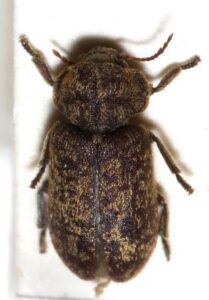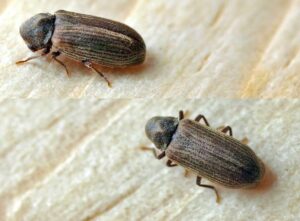Black Carpender Bee
General Description

Credit: SeeSchloss |
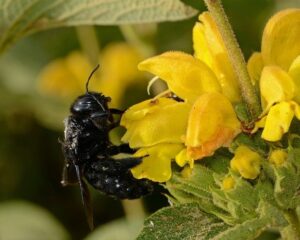
Credit: Gideon Pisanty |
- The carpenter bee is large and robust. Black in color and marked with areas of yellow hair, but the dorsal sides of the abdominal segments have no areas of yellow hair.
- Females grow up to 40 mm, black, with a metallic sheen.
- The thorax is covered with brown to black hair, and the upper side of the abdomen is glossy and bare.
- The female has a black head, and the male has white markings on the head. Dense brush of hairs on the hind legs.
Life Cycle and Common Characteristics
- The female uses her strong mandibles to excavate a clean-cut, round nest entrance hole (less than 10 mm wide) on the lateral surface of the wood in an exposed or unexposed location. They excavate the gallery at the rate of about 25mm in six days
- Tunnels are prepared by the female and eggs are laid in the spring.
- Larvae and pupae develop in the closed cells in early Summer.
- Adult bees emerge in late summer and return to the same tunnels to hibernate for the Winter months.
- In the spring, the adult mate, and the females lay eggs, completing the cycle.
- Carpenter bees complete one generation per year.
- Carpender bees are solitary insects that do not form colonies
Damage and Economic Implications
- Carpenter bees choose their nesting sites within buildings including siding, eaves, wooden shakes, porch ceilings, window sills and doors.
- They also nest in telephone poles, fence railings or posts, and even in lawn furniture.
- They prefer to nest in softwoods.
- Unpainted or well-weathered wood is much more susceptible to attack than hardwood or well-painted timbers.

